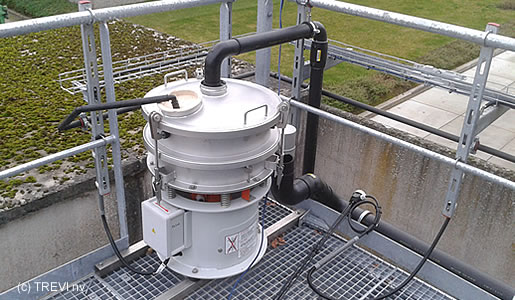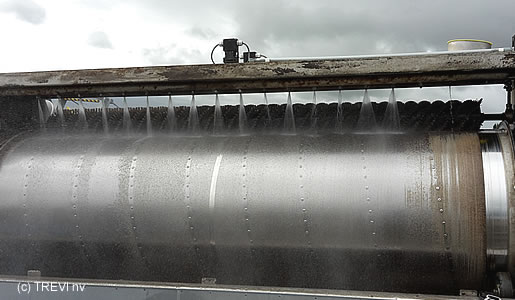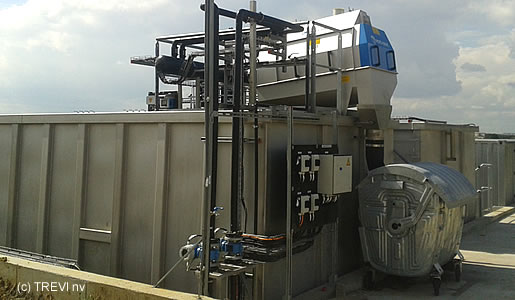Operation
Coarse waste particles and other solid particles are removed from the generated wastewater prior to the water treatment process. This pre-treatment step reduces the risk of clogging and / or damage to pipes or valves. The waste load to the wastewater treatment plant is thereby also reduced.
Grids
Placing grids prior to the pumps prevents damage to pump impellers and pump housings by coarse constituents. Grids consist of vertical bars and retain branches, rags, cans, paper, plastic and vegetable waste.
In waste water treatment both coarse grids (60 - 100 mm) and fine grids (10 - 25 mm) are found, which are typically used in combination. In some cases, fine screens (2 - 10 mm) are used as an alternative to a sedimentation tank, which allows significant area savings. Regular grid cleaning is required and can be performed manually or automatically (e.g. using a grid rake). Large installations sometimes benefit from a subsequent dewatering step to remove dirt. By means of a dirt press a reduction of up to 40% of the original material can be achieved. The press water is returned to the treatment plant.
Sieves
The use of a sieve is appropriate in different industries. Solid particles such as sand, plastic pellets, other particles as well as larger components which may not be restrained by any previous grids can thus be separated from the water. Periodic cleaning (whether or not automatic) of the sieve is managed by hard brushes, compressed air or flushing water under pressure.
The following sieve types can be identified:
The roto-sieve drum screen consists of a rotating perforated drum through which wastewater passes. The solids that remain in the drum are usually removed by a scraper blade.
A sieve bend or arc sieve is a slightly curved perforated metal plate arranged in a way that the separated dirt from the sieve falls into a waste container.
The vibratory sieve is a reciprocating horizontal perforated metal plate. Due to the vibrations the collected debris is discharged, while the water flows through the vibratory sieve.
Application
Grids and sieves are found in all sectors where dirt and/or solids need to be separated from the wastewater. Some of the sieve types have found applications in closed water circuits, offering protection to cooling towers, heat exchangers, etc.
Grids are mainly found in municipal wastewater treatment plants, as well as in specific industrial sectors, such as textiles, papers and food industries.
Vibrating sieves, sieve bends or drum screens are often used in laundries to reduce the content of coarse fibers and fluff. Along with the removed suspended solids, part of the organic contamination will also be disposed. In the food industry (potato processing, breweries, slaughterhouses, fish processing, greenhouse cultivation) useful applications can be found as well.
Realisation examples

A vibrating screen for ink-containing wastewater from a packaging manufacturer.

A drum sieve placed by Trevi for the treatment of wastewater.

Illustration of a Roto-sieve drum screen installed by Trevi in a wastewater treatment plant at a hospital.
Operational costs
Sieves and grids demand very low operation costs. The required frequency to clean the installation is strongly dependent on the wastewater characteristics and the constitution of the solids it contains.